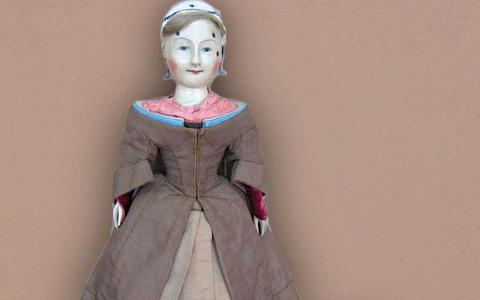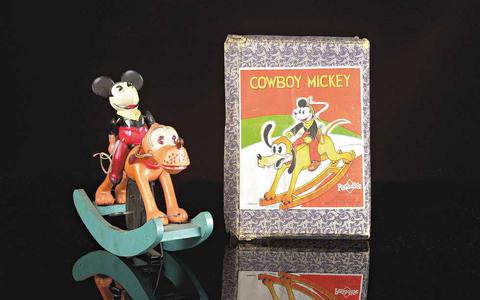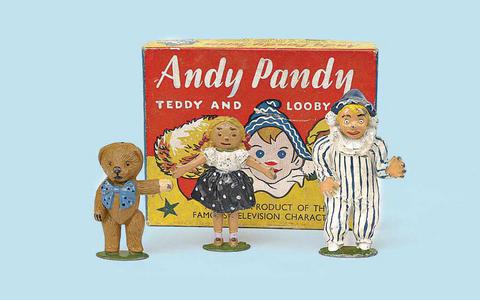photos www.ethnos.gr
Some of the rarest toys of the world have come to life again. They have survived wars and destruction, bringing joy to children. They will be on show in a unique exhibition, which opens on 5 December, at the Hellenic Cosmos Cultural Centre.
More than 100 valuable hand-made toys from around the world, the oldest of which goes back more than 310 years, will be shown at the exhibition. Among them is a doll from 1880, with Prince Henry Navarra as its model, robots from the 1950s, 19th century automatic toys, etc.
Toys introduce us to other societies and cultures. They also answer a great deal of questions, e.g. when lead soldiers became plastic, what the Titanic has in common with toys, why the ancient Greeks dedicated dolls to goddesses, when the famous Teddy Bear was born, and many others.
Toy manufacturers
The exhibition puts on display photos and information about the manufacturers of the exhibits, as well as about the children to whom they belonged. There will be various educational programmes and discussions on the history and role of toys in human development.
The exhibits come from the Greek Literary and Historical Archives, which owns one of the largest toy collections in the world. The organisers have the ambition to help educate young people and encourage their creative expression through historical evidence.
With a rich wardrobe

This is Blondine, the doll with the biggest... dowry. An extremely rare 1865 Madame Rohmer product, her head is made of porcelain, with metal elements, and the content of her chest is lavish: a silk umbrella, a red maroquin letter box, three handwritten letters, a card for dancing lessons, a photo album, a Pince-Nez, boots, shoes, jewellery and a hat. The doll was a gift for the tenth birthday of Blanche Mathilde Montgolfier, granddaughter of Marc Seguin, creator of the first suspension bridge, the first French railway line and the steam-engine boiler.
A 17th century doll

This is the oldest exhibit, going back to the late 17th century. A total of only 23 dolls worldwide have been preserved from this period. The wooden English doll with an engraved face, fair hair and opulent silken attire went through several families. The first one was Wedgeborough, Amsterdam timber traders. During that era, wax dolls were the most popular ones, and subsequently came the dolls from paperboard.
The villain

An extremely rare automatic toy manufactured in the 19th century by a company named Vichy. Unlike other toys of this company, this one is an ugly customer. Dressed in an authentic gilded silk cardigan decorated with pearls, he moves his left arm and bows his head to watch the pumpkin opening three times and a mouse jumping out of it. On the third time the villain tries to stab the mouse with a knife.
Oldric - 140 years old
Her name is Oldric de Portal, and 140 years ago she belonged to seven-year-old Violet de Portal. Her family were Huguenots, who lived in Hampshire and were specialized in the printing of banknotes. The doll has a woven carpet with the inscription "This carpet was made by Henry de Raymon de Portal, 1874, Burghler". Henry was Violet’s brother. The doll has pierced ears, a rotating neck, a wooden body and porcelain limbs. Her extensive wardrobe includes a velvet suit, white gloves, a turquoise velvet jacket, woollen cloak, a knitted silk jacket, a linen robe, a lace nightgown, and a labelled bag.
A dollhouse from the 1960s

The dollhouse was produced by Mettoy and lies in its original box. Its internal and external decoration is typical of the 60s. The furnishing includes a TV set, a corner bathtub and porch furniture.
Painted cubes

Among the Greek toys at the exhibition there is set of cubes painted by the artist Nikos Nyros that goes back to the 1950s.
Mickey Mouse riding Pluto

Manufactured in the early 1930s, this Cowboy Mickey of the Japanese company Paradise presents Mickey Mouse riding his dog Pluto. Mickey officially debuted in the short film Steamboat Willie (1928).
Figurines from the BBC series

Andy Pandy, Teddy and Looby Loo are three metal figurines, which are the main character set of the 1950s BBC Andy Pandy television series.
The Gorilla

It is a special gorilla, one that can shoot. It was made in 1950, and its original box also holds a pistol and three arrows.
A robot from The Gang of Five
This is a rare purple tin Lavender Robot in its original box, by the Japanese manufacturer Masydaya, from the late 1950s; it is a part of the so called Gang of Five that includes four similar robots: Non-stop, Target, Radicon and Machine Man, with the latter being the rarest.